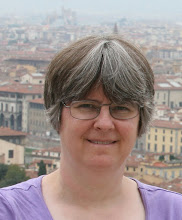Photojournalism and emotions
In this chilling article, a photojournalist describes his "struggle with how to define the conflict in Iraq without letting it define [him]." I am angry about how we were dragged into this war and how it is being conducted. That article and its accompanying photographs help me engage my emotions in a more productive way than just expressing an amorphous anger at George Bush which is really all I've been capable of until recently. I've been trying to process it through doing anagrams about him, but that doesn't really work; it only fuels the nondescript anger and/or masks it with humor. But looking at photographs, and thinking and writing seriously about what is going on, are more effective. I never seem to be anywhere where anything newsworthy is going on. That's probably because I don't like crowds much and am not big on sleeping in discomfort or putting my life at risk. I was thinking back through all my past photographic work, and I think I've only ever taken one remotely photojournalistic shot (this one from when John Kerry's sister Diana came to speak in Vancouver), and definitely nothing very exciting or dangerous. But I do find the genre fascinating, and I think it is very important for us all to engage with at some level.
I never seem to be anywhere where anything newsworthy is going on. That's probably because I don't like crowds much and am not big on sleeping in discomfort or putting my life at risk. I was thinking back through all my past photographic work, and I think I've only ever taken one remotely photojournalistic shot (this one from when John Kerry's sister Diana came to speak in Vancouver), and definitely nothing very exciting or dangerous. But I do find the genre fascinating, and I think it is very important for us all to engage with at some level.
I don't have a TV, so apart from a brief invitation to a friend's apartment on the morning of September 11, 2001, during which I learned in real time of the towers' collapse, I was shielded from most of the repetitive coverage which formed so much a part of our collective national consciousness. (Well, I saw it once, and everyone else saw it ten gazillion times.) However, after 9/11, part of the way I processed that whole event and my emotions about it was to put together a portfolio of news photos that had moved me or which I found particularly excellent. I stared at them over and over and allowed the emotions to well up in me afresh. I bought all the news magazines I could get my hands on, and even several photo memorabilia books. I was looking at them not only for the emotions, though, but also as a photographer, admiring the work of fellow photographers.
After a few weeks I found I no longer was interested in looking at the 9/11 photos. They'd done their work. The images had been seared into my memory, the emotions were subsiding, I was learning to deal with the reality of what had happened and think about it at a new level. But in those first days when shock and denial and anger and fear and grief were raw, it was helpful to have the photos, to help bring me closer to Ground Zero. And I learned a lot about what makes good photojournalism through the process. I'm still not sure whether I'll ever be somewhere where I can put what I learned into practice. But it's worth knowing anyway. It has given me a yardstick by which to critique the work of photojournalists. If it can create emotions in me like those I felt when I looked at the 9/11 photos, it's good photojournalism.
Incidentally, I recently read that James Nachtwey, one of the photographers whose work I most admired from back then, was honored as one of the winners of this year's TED prize, given to those who have the best ideas for using Technology, Entertainment, and Design, to change the world for the better. The prize is $100,000 for each recipients to realize his or her conception.



No comments:
Post a Comment